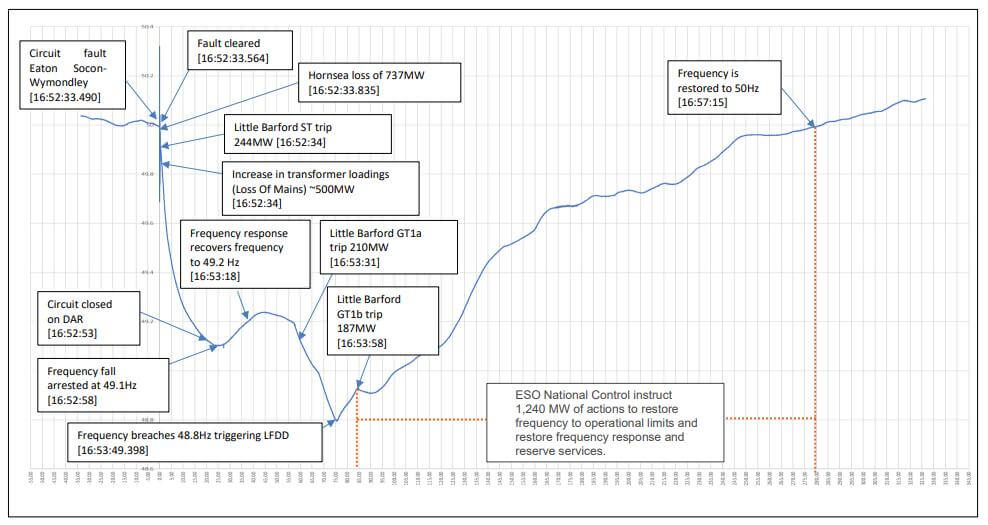National Grid’s report into the UK blackout of August 2019 points to the almost simultaneous failure of two large generation plants.
In a recent webinar hosted by ATA Insights, Kiwi Power’s Commercial Manager, Simon Williamson, discussed what lay behind the blackout, and what lessons can be learned.
As the UK continues its net zero carbon transition creating a smarter, more flexible energy system with widespread deployment of energy storage and demand side response is a must.

Battery energy storage in particular can provide the ultra-fast capacity needed to help decisively manage the kind of short-term supply loss seen in August.
Distributed risk
Distributed energy systems are inherently more reliable with less large single points of failure. Kiwi Power’s portfolio of distributed energy assets responded in real-time, reducing demand and exporting stored energy to help mitigate the shortfall in supply and stabilise the grid.

Rapidly scaling these technologies requires competitive markets that provide a level playing field for new technologies to compete with incumbent generation, and a regulatory regime that incentivises low carbon solutions.
Most urgently, National Grid needs to facilitate greater access to the Balancing Mechanism (BM), which is currently dominated by large-scale, centralised fossil fuel generation and only accessible to businesses with a supply license. National Grid’s Wider Access to the BM roadmap is a positive step and it will be interesting to see how it is implemented.
With the right markets, flexibility providers can rapidly bring forward fast-acting, flexible capacity to help National Grid avoid a repeat of August’s blackout and create a smarter, cleaner, more resilient energy system for everyone.
If you want to find out how Kiwi Core technology can manage your energy assets, get in touch.